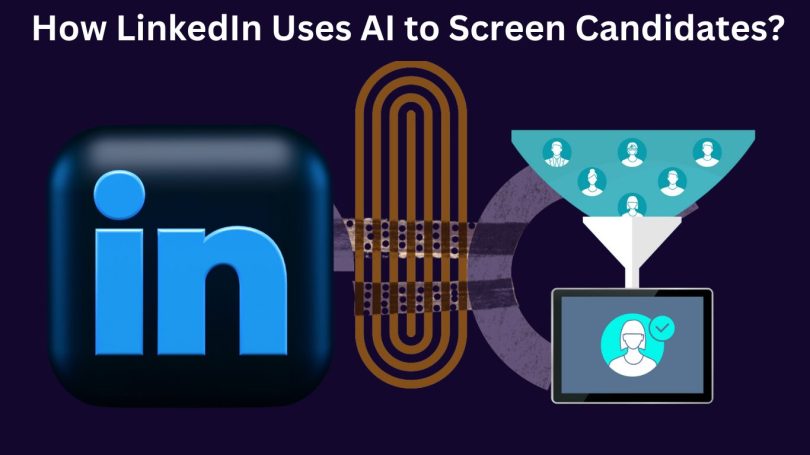The development of Artificial Intelligence (AI) has brought tremendous changes in the area of recruitment. Companies have a trend of digitalizing their business process using AI technologies to facilitate faster decision-making, identify the best candidates and minimize bias in hiring. With professional networks and job applications, LinkedIn has become one of the most powerful tools/apps for employers to find and choose the most competent candidates.
This article takes prospective readers through an in-depth journey of how AI is used by LinkedIn to filter candidates and transform the hiring process.
- AI is the tool that LinkedIn is using.
AI is used on LinkedIn by employing all kinds of techniques to analyze a vast amount of candidate data and extract valuable insights. Here are some key technologies at play:
- Natural Language Processing (NLP)
With NLP, LinkedIn can interpret the textual data (such as candidate profiles and resumes) that is present to get the meaning behind the text. Through the use of tags, skills and experiences keywords, NLP helps to pinpoint suitable candidates for various job offers. One example is NLP which can identify technical skills from project details or detect soft skills through the language used in references.
- Machine Learning (ML)
ML algorithms learn from historical information to see the patterns and to make predictions. With ML models as one of the candidate screening tools, the models analyze candidate’s profiles, and past successful hires to rank candidates according to their suitability for a specific position. Moreover, the AI will also check the authenticity and red flags within candidate profiles and this can automatically prompt further scrutiny.
- Deep Learning (DL)
Though not yet fully utilized, the power of Deep Learning (DL) is enormous when it comes to the future progress of the AI-powered screening on LinkedIn. DL algorithms analyze and process complex data models, including non-textual components like project descriptions and visuals. This may result in a more holistic approach to talent acquisition and possibly the identification of soft skills as well as traits through written communication analysis.
Contribution of AI to Screening Process in LinkedIn.
AI plays a vital role in various stages of LinkedIn’s candidate screening process:
Matching Candidates to Job Postings
When a hiring manager puts a job posting on LinkedIn, AI algorithms possibly will be applied to find candidates who are most relevant through skill-matching, experience analysis and background comparison. This greatly eases the preliminary screening procedures by showcasing recruiters the list of the most suitable applicants.
Identifying High-Potential Candidates
LinkedIn data models are based on the historical hiring data to predict successful fits. These models involve studying the profiles of candidates and winners in the past to understand any patterns and features that are common in high performers.
AI assists the recruiters in sorting out candidates with similar traits and thereby focuses on prospects with better chances of success in the job role.
Personalization for Both Recruiters and Candidates
AI customizes the search for the recruiters by suggesting the candidates, who have been hired previously by the recruiters and the job requirements. Furthermore, it helps to determine the individual messages that may be sent to candidates, depending on their skills and experience, thus creating a more interactive recruitment process.
On the candidate side, AI can analyze user profiles and recommend the skills or certifications that are highly searched in their field, which helps them improve their CV profile visibility to recruiters with relevant profiles.
Blessing and a Curse of AI-powered Screening
While AI offers significant advantages, it is also crucial to acknowledge the associated challenges.
Benefits/Blessing for Recruiters
- Increased efficiency: AI takes over the tedious jobs like filling in initial forms, thereby, saving the recruiters time and effort.
- Identifying top talent: AI allows the finding of high-potential candidates through the traditional methods and by looking further.
- Reduced bias: AI algorithms are able to eliminate factors like gender or name that could be unfairly used as selection criteria and can instead focus on the candidate’s qualifications.
Benefits/Blessing for Candidates
- Increased visibility: AI is the tool for the selection of high-skilled future employees by the relevant recruiters for the best opportunities.
- Improved profile optimization: AI helps to emphasize the most important skills and experiences, which makes profiles more effective for recruiters and leads to a higher number of interviews.
Challenges/Curse of AI-powered Screening
Algorithmic bias: The performance of AI models is usually a function of the quality of the dataset that they are trained on. If biased data sets are used, then algorithms might continue to do so as well.
Human oversight remains crucial: AI is to be used as an assisting tool instead of the replacement of the judgment of humans in the hiring process. Recruiters not only need to take cultural fit and soft skills into account, because AI has not been able to fully grasp it yet.
Transparency and fairness: Making sure that human beings understand how AI algorithms make decisions is an important success factor of the recruitment process that AI has in it.
Final Thoughts
In a nutshell, AI’s core components (Natural Language Processing and Machine Learning) are used by LinkedIn to automate the candidate screening process, which benefits both recruiters and candidates. Although algorithmic bias is a challenge that needs to be solved, the future is exciting with the possible use of skill assessments and artificial intelligence models with advanced skills detection. While AI continues to evolve as a revolutionary recruitment approach, transparency and fairness are the fundamental elements which need to be emphasized to retain trust and consistency.



